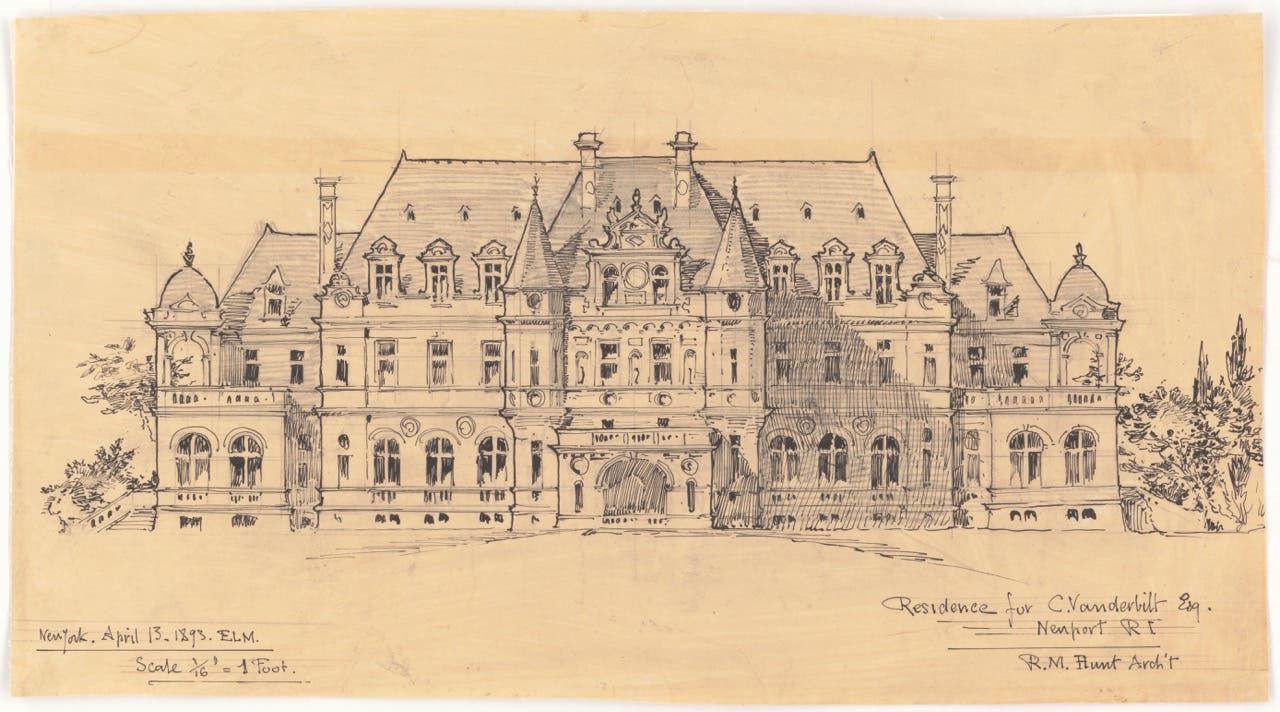
Features
Book Review: Harrison Design 25
As an Amazon Associate, we earn from qualifying purchases made through affiliate links.
A successful architect leaves behind an impressive body of built work, but a really successful architect also leaves behind a thriving practice that can carry on the firm’s vision when the founder passes from the scene. After reading this unique monograph from Harrison Design, it looks like William H. “Bill” Harrison has scaled these twin peaks of architectural achievement.
This new volume, which marks the 25th anniversary of Harrison Design, is not your usual architectural monograph because it tells not one but two distinct and separate stories. First (as one would expect in such a book) it functions as a sumptuous photographic portfolio that showcases the full range of the firm’s projects. Second, the book provides insights into the human side of the firm—giving more of a backstage look into the “people part” of the architectural business than you get from the typical monograph.
Founder Bill Harrison’s path into architecture was hardly linear:
Always interested in drawing, he was only 12 years old when he started working part-time as a draftsman for a local architect. Nevertheless, a career in architecture was far from inevitable because Harrison is a man of many interests. As Henrika Taylor’s lucid text relates, Bill’s other early enthusiasms included nuclear physics, ballet—and neurosurgery.
Even so, Bill enrolled at Georgia Tech’s School of Architecture—but his restless energy soon drew him in many other surprising byways: UPS truck loader, an architectural rendering and model business, lighting designer in California, proprietor of a leather crafting and apparel company, partner in an enterprise that booked live events in clubs and theaters, blue-water sailor, and—finally—a design-build contractor. His trans-Atlantic sailing adventures had taken him to Italy’s Veneto region, where Palladio’s villas re-ignited Harrison’s passion for architecture. This seemingly unrelated accumulation of experiences in drawing, Palladian architecture, and coordinating diverse groups of people as a businessman eventually formed the foundation for building a far-flung architectural enterprise.
Upon his return to the U.S., Harrison started renovating and selling derelict houses. Rapid growth morphed the construction company first into a design-build business and then finally—in 1991—into a full-fledged architectural services firm. By the end of 2016, in addition to the company’s headquarters in Atlanta, GA, the practice now has offices in St. Simons Island, GA, Santa Barbara, CA, Los Angeles, New York City, Washington, DC, and Shanghai, China.
Harrison Design’s architecture illustrated in these pages shows contemporary traditionalism rendered at the highest level of aesthetics, materials and craftsmanship. Some of the work is pure Classicism; other projects are inspired by a variety of other historic and vernacular styles. (There are even a few designs rendered in that most recent of historic styles: Modernism.) In each of the projects, the architects cleverly combine respect for historic precedent with the innovation contemporary living requires.
As Elizabeth Plater-Zyberk observes in her foreword, Harrison’s designers manage to make traditionalism look nonetheless modern with a skill that “recalls the last great generation of Beaux-Arts trained architects.” And like the Beaux-Arts ateliers of 125 years ago, the Harrison firm also places great emphasis on the role of hand-drawing and sketching—along with the obligation of senior architects to mentor and nurture the skills of young designers.
This anniversary monograph goes to great lengths to avoid the cult of personality that characterizes so many top-level architectural firms these days; there is no effort by the founder to hog all the credit, although there’s no doubt that Bill Harrison’s vision and philosophy remain as the central core of the practice. The text emphasizes that architecture at this scale is a team effort where collaboration is critical. Extensive credit is given to various key players in the firm through a series of brief profiles. For example, the monograph not only recounts the professional history of Gregory L. Palmer, the senior architecture and managing principal, but also includes this accolade from Bill Harrison: “If I leave here tomorrow, I’d rest peacefully knowing Greg is looking after the shop.”
Similar profiles are given for eight of the other design principals—plus the landscape and interior design studios. Also somewhat unusual: In addition to the designers, ample credit is also given to the support staff, such as the tribute accorded to Deborah Harrison who for 27 years oversaw the amazing growth of the firm in her roles as Finance and Business Manager.
Today, Bill Harrison is increasingly focused on mentoring the next generation.
He muses: “If I have learned anything from my path, it is to invest in people.” That concern for the future extends to a keen interest in current architectural education. Among its many pro bono activities, Harrison Design has sponsored pioneering efforts in teaching classical design at institutions such as Georgia Tech and the University of Miami—and Bill Harrison himself has devoted many years of service to the Institute of Classical Architecture & Art.
Looking through the pages of this handsome volume, the reader will doubtless find many examples of timeless design that are sure to spark further creative ideas. Perhaps of even greater importance: Anyone who is attempting to sustain and build an architectural practice in these challenging times will find numerous concepts for team-building and inspiring creative people to ever-greater heights of excellence.
Editor Emeritus Clem Labine is the founder of Old House Journal, Traditional Building and Period Homes magazines. He is the recipient of numerous awards and was a founding board member of the Institute of Classical Architecture, now the ICAA.
Clem Labine is the founder of Old-House Journal, Clem Labine’s Traditional Building, and Clem Labine’s Period Homes. His interest in preservation stemmed from his purchase and restoration of an 1883 brownstone in the Park Slope section of Brooklyn, NY.
Labine has received numerous awards, including awards from The Preservation League of New York State, the Arthur Ross Award from Classical America and The Harley J. McKee Award from the Association for Preservation Technology (APT). He has also received awards from such organizations as The National Trust for Historic Preservation, The Victorian Society, New York State Historic Preservation Office, The Brooklyn Brownstone Conference, The Municipal Art Society, and the Historic House Association. He was a founding board member of the Institute of Classical Architecture and served in an active capacity on the board until 2005, when he moved to board emeritus status. A chemical engineer from Yale, Labine held a variety of editorial and marketing positions at McGraw-Hill before leaving in 1972 to pursue his interest in preservation.








